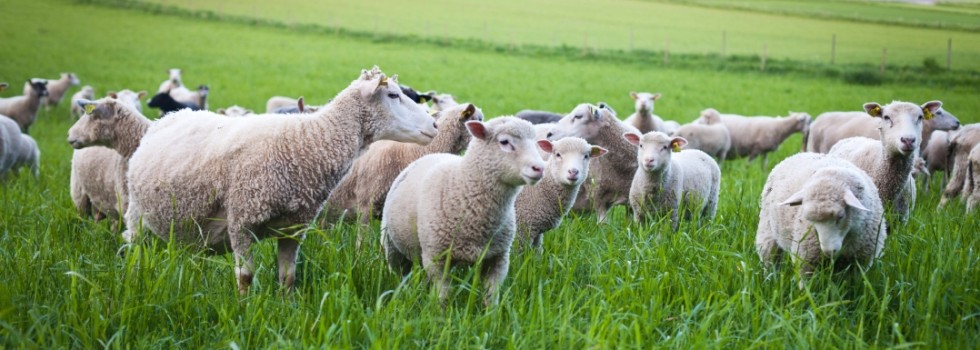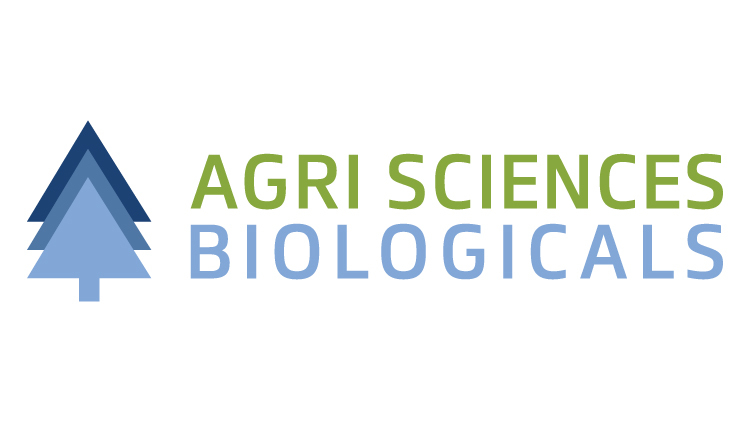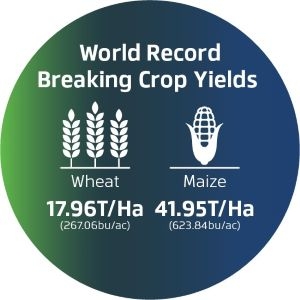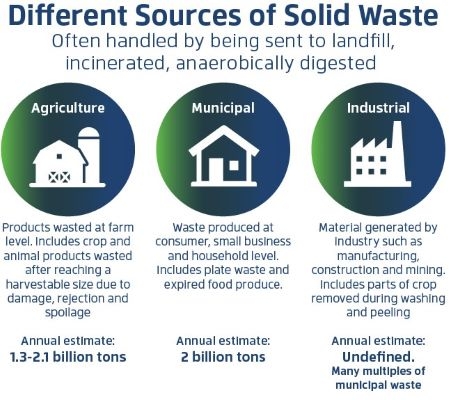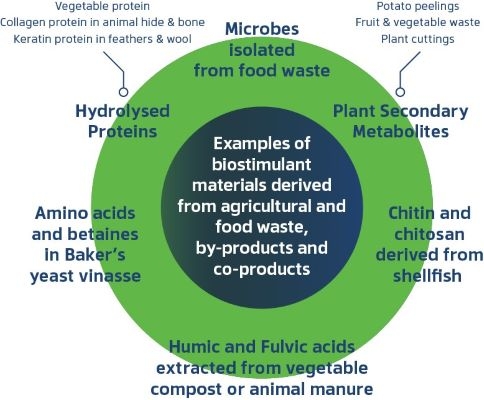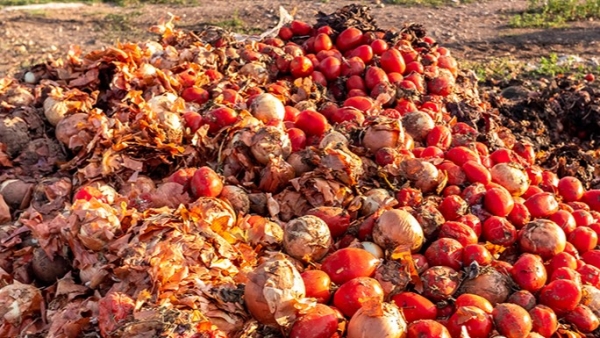Promotional Features
Reframing ‘waste’: Realizing the value of by-products as raw material sources for biostimulants
Between 1.3 to 2.1 billion tonnes of agricultural solid waste is generated around the world on an annual basis.1
This is then accompanied by two billion tonnes of municipal waste from households, which is predicted to rise to over 3.4 billion tons by 2050.2 Firm statistics on the industrial solid waste generated each year are difficult to come by but are estimated to be many times higher than municipal figures.
Whichever way you look at it, much of this waste arises because the food chain has become disjointed and broken. Our food supply chains have focussed so intently on efficiency and pushing for improved profit margins, that throughout recent decades it has removed some of the essential integrations needed for healthy and robust food production systems.
Specialisation and intensification trends in most developed countries have certainly been successful in increasing yield and astonishing records have been broken in some major food crops.
Source: Guinness World Records3,4
However, this has come with an ever-increasing reliance on greater inputs in conjunction with increasing waste. Common to municipal solid waste, agricultural solid waste and industrial solid waste is that they all include valuable crop and agricultural materials.
Agricultural waste is determined as the produce that is sent to destinations such as landfill, incineration or ploughed in/left unharvested. The food waste we generate at a municipal (household) level is well published and discussed. Those parts of food products that are removed from the crop or animal during industrial cleaning or processing fall under industrial solid waste.
Source: WWF5
Why is so much wasted at farm level? Growers face multi-pronged challenges when trying to produce very specific grades of produce to meet processor and consumer demands and having it ready for harvest at optimum timings to achieve best price returns. The delicate balance of supply and demand can mean that some marketable product languishes on-farm or in storage and degrades or is infested by pests before it is sold into the food chain. Such product is then often managed as waste.
Excluded from waste statistics are the pre-harvest, in-field losses of animals and crops due to pest, disease and climate change, which account for anywhere between 20-40% total yield globally.6 These combined numbers highlight the incredible nutritional value that is not realized and never reaches market in a world where over 2.4 billion people live in moderate to severe food insecurity.7
Missed opportunities to utilize by-product
The pattern here is missed opportunity. The phrase ‘waste’ implies something has no use or value. The circular economy is reliant on reducing waste, recycling, re-using and recovering resources and energy. Food and animal products are a rich source of carbohydrates, proteins, lipids and organic matter which can be valuable raw material inputs for further agricultural production. It is essential to change the narrative from ‘waste’ to ‘by-product’ and ‘co-product’ and recognize the inherent value of these materials.
In fact, estimates suggest that there is an $80 billion market potential which could be captured by manufacturers and retailers who develop new business from this produce that would otherwise be lost.8 Research and innovation at all stages of the food production, processing and retailing stages can turn waste and loss into value streams.
Innovation in by-products and co-products
The definition of by-product is generally accepted as being something produced as a residual of, or incidentally to, a main production process which has value and can be used in existing form or recycled for other purposes. Co-products are desirable secondary goods and are sometimes manufactured sequentially because of similarities in the production process and are usually a planned output.
A significant volume of by-product is currently managed as waste. In agri-food chains an example of putting this by-product to better use is as organic fertilizer or biostimulant material. Spent coffee grounds, banana peel, sheep wool, blood and bone meal, feathers and eggshells have been shown to be rich sources of nutrients for fertilizers.
Biostimulants fall under fertilizer classification and have now been defined in the EU as products which “stimulate the nutritional processes of a plant independently of the nutrients they contain”.9 They can be a substance or a microorganism which:
- Enhance nutrient uptake efficiency
- Improve tolerance to abiotic stress
- Improve crop quality
- Increase the availability of nutrients in the soil or rhizosphere
Incorporating biostimulants into crop production programmes can enhance resilience, reduce reliance on synthetic inputs and support improved quality of yield, all of which go toward improving food security and achieving commitments such as those set out in the EU Green Deal and UN Sustainable Development Goals.
The predicted CAGR of the biostimulant market is 11.8% (2023-2028) and significant research has gone into identifying and developing novel products, with some industry figures suggesting that biostimulant companies invest up to 10% of turnover in research and development (R&D).10,11 Many of the identified and proven biostimulants are already derived from agricultural and food by-products but new opportunities are identified as we develop improved techniques to isolate and extract specific compounds.
Each year supply of animal hide is guaranteed by the fact that China, the US and India produce over one million tons each.12 Feather waste volumes in the EU alone exceed three million tons, up to eight million tons of lobster, crabs and prawn shells are generated during processing, and 20 million tons of orange peel.13,14
An example of an agricultural product which is currently under-utilized is sheep wool. Because of the changing fabric and fashion industry, wool fibre – which was once highly valued – has been replaced by different materials. It is now often deemed to be a by-product, or even treated as waste during sheep production primarily for meat. The 1.2 billion head of sheep around the world represents a considerable source of ongoing renewable, raw material as many breeds of sheep are sheared annually.15
Arguably one of nature’s wonder materials, wool has incredible insulation and water holding properties. It is also a source of slow-release organic fertilizer with useful nitrogen and potassium content. The keratin protein it contains is a valuable source of hydrolysed protein for biostimulants. A unique example of an already commercialized biostimulant derived from hydrolyzing sheep wool keratin into a liquid product is Yaarn™ from Agri Sciences Biologicals. When applied to crops it has been proven to stimulate greater rooting and leaf area index, enhancing yield and quality.
Repairing the disconnect in agriculture
There is broad consensus that we need to move away from some of the most intensive systems and improve integration of regenerative practices in modern agriculture. There are many aspects to regenerative farming but an important role is played by livestock, which are used in rotations, grazing grass and cover crops as a means to support soil fertility and reduce reliance on certain synthetic inputs. If utilizing livestock as part of this process, it is imperative to ensure that we have viable markets for all parts of the produce, both as a primary product and as a by-product.
Striving towards a reduction in waste from agriculture, municipal and industrial streams requires innovative use of by-products and education to avoid waste. Evidence clearly demonstrates that these by-products are readily available and valuable, economically, socially, and environmentally. It is galling that significant volume is still managed as waste today and either incinerated or sent to landfill.
Collaboration for a circular agri-food economy
The food and agriculture industries are so vast that change will only result from collaborative approaches. We urgently need to improve communication and collaboration between all stakeholders in the agricultural and food processing and retail sectors. Although there has been positive movement in this direction, we are often woefully lacking.
An example of this being that international conferences are often split by industry with minimal crossover of attendance, which is apparent from studying attendee lists at events with an agricultural focus versus food focus. Without collaboration, research and development efforts can be replicated or missed altogether and opportunities to utilize by-products not seized. Could regulatory bodies be responsible for promoting the use of by-product when building new regulation or assessing new product registrations?
It is critical that businesses at every stage of the agri-food chain take responsibility for creating a more circular economy, reducing waste and utilizing by-product more effectively. Improving more circular means of communication can help guarantee markets for all harvested product, either into the food chain or into bioprocessing to recover nutrients and contents - at the same time ensuring growers have alternative avenues to sell produce that does not meet food market specifications and processors have ready markets for processing by-product.
Agri Sciences Biologicals utilizes by-products properly, strengthens the farming industry, protects the environment and improves food security.
References
1. FAO. Global food losses and food waste.
2. Statista, Projected generation of municipal solid waste worldwide from 2016 to 2050
3. Guinness World Records. Highest wheat yield.
4. Successful Farmer. New corn yield record set at 623 bushels.
5. WWF. Hidden waste: The scale and impact of food waste in primary production.
6. Food and Agriculture Organization. Pest and Pesticide Management.
7. United Nation. Global issues: Food.
8. McKinsey & Company. Reducing food loss: What grocery retailers and manufacturers can do.
9. Netherlands Food and Consumer Product Safety Authority. Biostimulants.
10. Global Newswire. $6.8 billion The Expected Market Size of Biostimulants by 2028.
11. European Biostimulants Industry Council. Economic Overview of the European Biostimulants Market.
12. Scanes, C. G.; (2018). Chapter 2 - Animal Attributes Exploited by Humans (Nonfood Uses of Animals). Animals and Human Society. Academic Press. Pages 13-40.
13. Cordis. Industrial Feather Waste Valorisation for Sustainable Keratin based Materials.
14. Arul Jayanthi Antonisamy, A. J.; Marimuthu, S.; Malayandi, S.; et al. (2023). Sustainable approaches on industrial food wastes to value-added products – A review on extraction methods, characterizations, and its biomedical applications. Environmental Research. Volume 217, 114758.
15. IWTO. World Sheep Numbers & Wool Production.
Additional references
Waste Managed. Agricultural Waste Guide 2024.
Peng, X.; Jiang, Y.; Chen, Z. et al. (2023). Recycling municipal, agricultural and industrial waste into energy, fertilizers, food and construction materials, and economic feasibility: a review. Environ Chem Lett 21, 765–801.
Narasimmalu, A.; and Ramasamy, R.; (2020). Food Processing Industry Waste and Circular Economy. IOP Conference Series: Materials.
McKenzie, F.; Trajectories of Change in Rural Landscapes: The End of the Mixed Farm? Rural change in Australia. Chapter 8.
Progressive Farmer. 2023 NCGA Corn Yield Contest Results.
CABI. Global Burden of Crop Loss.
Landgeist. Livestock density.
Microsoft. About co-products and by-products.
Yan, N.; Chen, X. (2015). Sustainability: Don't waste seafood waste. Nature 524, 155–157.
